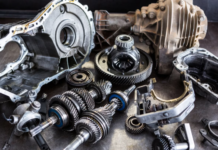Precision motion control is a critical aspect of industrial applications, influencing the efficiency and accuracy of machinery. Whether you are managing a manufacturing plant or you require heavy machinery in your other industrial works, you might need a precise motion control system for smooth functioning.
To ensure seamless operations and enhance productivity, it is essential to implement strategies that prioritize precision in motion control systems. Here are six key points to guide industrial professionals in achieving optimal precision.
1. Selecting The Right Motion Control Components
The foundation of precision motion control lies in choosing the right components for your application. Begin by meticulously selecting motors, drives, controllers, and machine parts such as timing pulleys that match the specific requirements of your machinery. Ensure compatibility between these components to create a cohesive system.
You should also consider factors such as torque, speed, and resolution during the selection process. A well-matched set of components forms the basis for achieving the precision needed in your specific industrial motion control applications.
2. Implementing High-Resolution Feedback Systems
You should incorporate high-resolution feedback systems, such as encoders or resolvers, to provide accurate position and speed feedback. These systems enable real-time monitoring and correction of any deviations, ensuring precise control over the motion.
You should also choose feedback devices with resolutions that meet the demands of your application, considering factors like accuracy and environmental conditions. Reliable feedback is instrumental in maintaining the desired level of precision in industrial machinery.
3. Regular Calibration And Tuning
Maintain precision by implementing regular calibration and tuning procedures. Over time, factors like wear and environmental conditions can affect the performance of motion control systems.
Periodically calibrate and tune the components to compensate for any deviations. This proactive approach ensures that the system remains finely tuned, delivering consistent and accurate motion control throughout its operational life.
4. Minimizing Mechanical Play And Backlash
Mechanical play and backlash can significantly impact precision in motion control. Design and maintain mechanical systems with minimal play and backlash to eliminate undesired movements and inaccuracies.
Utilize high-precision components, such as lead screws and linear guides, and implement anti-backlash mechanisms where necessary. By minimizing mechanical play, you enhance the responsiveness of the system, ensuring precise control over the movement of industrial machinery.
5. Embracing Closed-Loop Control Systems
Closed-loop control systems play a pivotal role in achieving precision by continuously adjusting the control input based on real-time feedback. Implement closed-loop control strategies to actively correct errors and deviations, ensuring that the system maintains the desired trajectory.
This adaptive approach enhances the accuracy of motion control, making it particularly effective in applications where consistent precision is paramount.
6. Investing In Training And Skill Development
The human factor is crucial in ensuring precision motion control. Invest in training programs to equip operators and maintenance personnel with the skills to operate and troubleshoot motion control systems effectively.
Well-trained personnel can identify issues early, perform routine maintenance, and address any deviations promptly, contributing to sustained precision in industrial applications.




